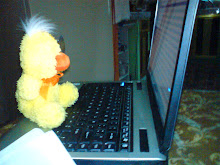
Al infectar las bacterias cualquier tejido del organismo, se produce una afluencia de glóbulos blancos fundamentalmente de tipo polimorfonuclear (neutrófilos), los que fagocitan a estos microorganismos agresores.

Un cierto número de bacterias pueden sobrevivir, multiplicándose dentro de los glóbulos blancos los que en un determinado momento son lisados (estallan), liberando al medio que los rodea una gran población de bacterias infectantes.

A partir del proceso inflamatorio se liberan al medio sustancias que atraen gran cantidad de polimorfonucleares al área, lo cual conduce a la intensificación de la inflamación.

La presencia de un mayor número de glóbulos blancos neutrófilos lleva a que una importante cantidad de bacterias se rodeen de una cápsula resistiendo de esta manera la fagocitosis a partir de los leucocitos.

La protección que ofrece la cápsula a las bacterias amenazadas por los glóbulos blancos, les permite además multiplicarse, aumentando su número e intensificando el grado de la inflamación.

Determinados glóbulos blancos producen anticuerpos, fundamentalmente del tipo opsonizante, que permiten una adecuada fagocitosis y lisis bacteriana, deteniendo de esta manera la agresión y dando fin al proceso inflamatorio.
RESPUESTA DEL ORGANISMO
La respuesta a bacterias intracelulares esta coordinada por quemokinas y citoquinas liberadas por las celulas th1 estimuladas por antigenos proteicos.



Buenos días
ResponderEliminarMuy buen resúmen
Su maestra
creo que deberian especificar que tipo de celulcas actuan, por ejemplo cuando se atraen los neutrofilos,explicar mas el porque
ResponderEliminarMy name is hoover, my 18 years old daughter, Tricia was diagnosed of herpes 3 years ago. ever since then,we have been going from one hospital to the other. We tried all sorts of pills but all efforts to get rid of the virus was futile. The blisters kept on reappearing after some months. My daughter was making use of Acyclovir tablets 200mg. 2 tablets every 6hours and fusitin cream 15grams. and H5 POT. Permanganate with water to be applied 2x a day but all still show no result. So I was on the internet some months back, to sought for any other means of saving my only child. just then, i came across a comment on dr imoloa herbal treatment and decided to give it a try. i contacted the him and he prepared some herbs and sent it to me together with guidelines on how to use the herbs through DHL courier service. my daughter used it as directed dr imoloa and in less than 14days, my daughter regained her health.. You should contact Dr imoloa today directly on his email address for any kind of health challenge; lupus disease, mouth ulcer, mouth cancer, fever, hepatitis A.B.C., syphilis, diarrhea, HIV/AIDS, Huntington's Disease, back acne, Chronic renal failure, addison disease, Chronic Pain, Crohn's Disease, Cystic Fibrosis, Fibromyalgia, Inflammatory Bowel Disease, fungal nail disease, Lyme Disease, Celia disease, Lymphoma, Major Depression, Malignant Melanoma, Mania, Melorheostosis, Meniere's Disease, Mucopolysaccharidosis , Multiple Sclerosis, Muscular Dystrophy, Rheumatoid Arthritis, Alzheimer's Disease, parkison disease, vaginal cancer, epilepsy, Anxiety Disorders, Autoimmune Disease, Back Pain, Back Sprain, Bipolar Disorder, Brain Tumour, Malignant, Bruxism, Bulimia, Cervical Disk Disease, Cystic Fibrosis, Hypertension, Diabetes, asthma, Inflammatory autoimmune-mediated arthritis. chronic kidney disease, inflammatory joint disease, impotence, feta alcohol spectrum, Dysthymic Disorder, Eczema, Chronic Fatigue Syndrome, constipation, inflammatory bowel disease. and many more; contact him on email- drimolaherbalmademedicine@gmail.com./ also on whatssap-+2347081986098.
ResponderEliminar